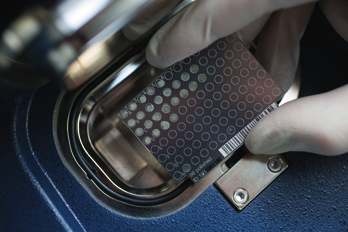
The Next Step for 23andMe and FDA
Direct-to-consumer (DTC) genetic testing firm 23andMe announced that the Food and Drug Administration (FDA) accepted its submission for a new 510(k) application for a single health report on Bloom syndrome.
“Although the submission focuses on a single rare but serious inherited condition we report to customers, it is an important step in our work with the FDA in the coming months,” said Kathy Hibbs, 23andMe’s chief legal and regulatory officer. “Once cleared, it will help 23andMe, and the FDA, establish the parameters for future submissions. More importantly, for our customers, it marks a baseline on the accuracy and validity of the information we report back to them. The submission includes robust validation data covering major components of our product such as the genotyping chip, software, and saliva kit.”
23andMe has had a tumultuous relationship with FDA ever since the agency sent warning letters in 2010 to all DTC genetic testing companies accusing them of marketing medical devices without proper clearance. As the only company in the field to continue its testing service after this admonition, 23andMe began seeking 510(k) clearance for seven of its nearly 200 genetic tests in 2012, a move that seemed like it could start a new era of growth for the DTC genetic testing industry. Ultimately, however, 23andMe failed to satisfy FDA with evidence of its tests’ validity. The agency shut down the operation in November 2013 in order to protect consumers from receiving invalid test results that could lead people to seek unnecessary—or to not seek necessary—medical treatment.
This 510(k) submission marks the first step 23andMe has taken toward getting its health-related genetic tests back online since FDA ordered the company to discontinue this service last fall.
The Wait for LDT Draft Guidance Nears an End
FDA recently notified Congress of its intent to issue long-awaited draft guidance on laboratory-developed tests (LDTs). In a letter to key congressional committees, the agency outlined in detail its plans for establishing a risk-based oversight framework for regulating LDTs. This includes a proposal to phase in enforcement of pre-market review for moderate- to high-risk LDTs, such as those with the same intended use as FDA-approved or cleared companion diagnostics currently on the market. The agency also intends to propose continuing to exercise enforcement discretion for low-risk LDTs, LDTs for rare diseases and, under certain circumstances, LDTs for which there is no FDA-approved or cleared test. Low-risk LDTs will also be subject to registration, listing, and medical device reporting requirements.
The public will be alerted to the start of the comment period for this draft guidance at a later date when the guidance is published in the Federal Register.
AACC will hold a webinar, “The New Guidance on LDTs: A Q&A With the FDA,” in which Alberto Gutierrez, PhD, director of FDA’s Office of In Vitro Diagnostic Devices, will discuss the agency’s regulatory intentions and what they will mean for labs and their ability to perform LDTs. The webinar will take place on September 10, 2–3 p.m. EDT. To register, visit www.myadlm.org/events/meetings/Pages/9087.aspx#.
FDA Authorizes Emergency Use of Ebola Test
In response to the alarming Ebola outbreak in West Africa, Secretary of Health and Human Services Sylvia Burwell on August 5 authorized the emergency use of in vitro diagnostics for detection of the Ebola virus. Immediately following this announcement, FDA issued an Emergency Use Authorization to green-light the emergency use of the U.S. Department of Defense EZ1 Real-time RT-PCR Assay for the detection of the Zaire strain of the Ebola virus, which is implicated in the West African epidemic. This test should be performed on Trizol-inactivated whole blood or Trizol-inactivated plasma specimens from individuals in affected areas with signs and symptoms of Ebola virus infection or who are at risk for exposure or may have been exposed to the Ebola Zaire virus in conjunction with epidemiological risk factors. This authorization is limited to the use of the EZ1 Real-time RT-PCR Assay on specified instruments by laboratories designated by the Department of Defense.
New Draft Guidance Seeks to Clarify the 510(k) Submission Process
FDA has released the draft guidance, “Benefit-Risk Factors to Consider When Determining Substantial Equivalence in Premarket Notifications [510(k)] With Different Technological Characteristics,” with the aim of improving the predictability, consistency, and transparency of the 510(k) premarket review process. Specifically, this proposed guidance clarifies the process of determining whether a new device is similar to, or substantially equivalent to, a device that’s already on the market, known as a predicate device. The establishment of substantial equivalence plays a significant role in determining whether a new device is safe and effective.
For two devices to be substantially equivalent, they must have the same intended use and technological characteristics. Or, if the new device has different technological characteristics than the predicate device—defined as significant differences in the materials, designs, energy source, or other features between the two devices—these differences must not raise different questions of safety and effectiveness. This draft guidance focuses on this latter scenario, and is intended to help 510(k) applicants to demonstrate substantial equivalence while also helping FDA reviewers to determine if two devices are substantially equivalent when there are different technological characteristics between the new device and the predicate device.
FDA is seeking public comment on this document through October 15. Electronic comments may be submitted at www.regulations.gov.
FDA Clears Multi-Analyte Quality Control From Randox
Randox has received FDA clearance for its Acusera Immunoassay Premium Plus quality control, a multi-analyte control that combines 52 analytes including tumor markers, hormones, therapeutic drugs, and vitamin D. The combination of analytes contained within this assayed control enables labs to quality control a wide range of immunoassay tests, reducing the number of single controls required. The Acusera Immunoassay Premium Plus is also manufactured from 100% human serum, which minimizes antibody cross reactivity and reduces the possibility of lot-to-lot variations when changing control batches. Instrument-specific target values for each analyte are assigned using data from a global peer group of over 25,000 laboratories, and three levels of control are available with analytes present at clinically significant levels. This includes ferritin and vitamin B12 at levels suitable for anemia monitoring, as well as a level 1 control containing ultra-low levels of thyroid-stimulating hormone. Notably, this is also the only third party multi-analyte immunoassay quality control in the U.S. that contains clinically relevant levels of vitamin D.
 Bruker’s MALDI-TOF System Cleared for Use in China
Bruker’s MALDI-TOF System Cleared for Use in China
The China Food and Drug Administration has given Bruker clearance to sell its IVD MALDI Biotyper System in China for the identification of microorganisms isolated from human specimens. The MALDI Biotyper uses matrix-assisted laser desorption ionization time-of-flight technology to identify microbes in a few minutes, providing a faster time to result than classical microbial testing methods that involve incubation steps. It can also analyze species that are difficult to identify using standard microbiology techniques, and includes a reference library of more than 2,300 microbial species of gram-negative bacteria, gram-positive bacteria, anaerobes, and yeasts, enabling the identification of unexpected microorganisms. The MALDI Biotyper’s ability to quickly identify a broad range of microbes has the potential to play a significant role in improving antibiotic stewardship and combating drug-resistant bacteria by helping to guide the selection of appropriate therapeutic drugs.